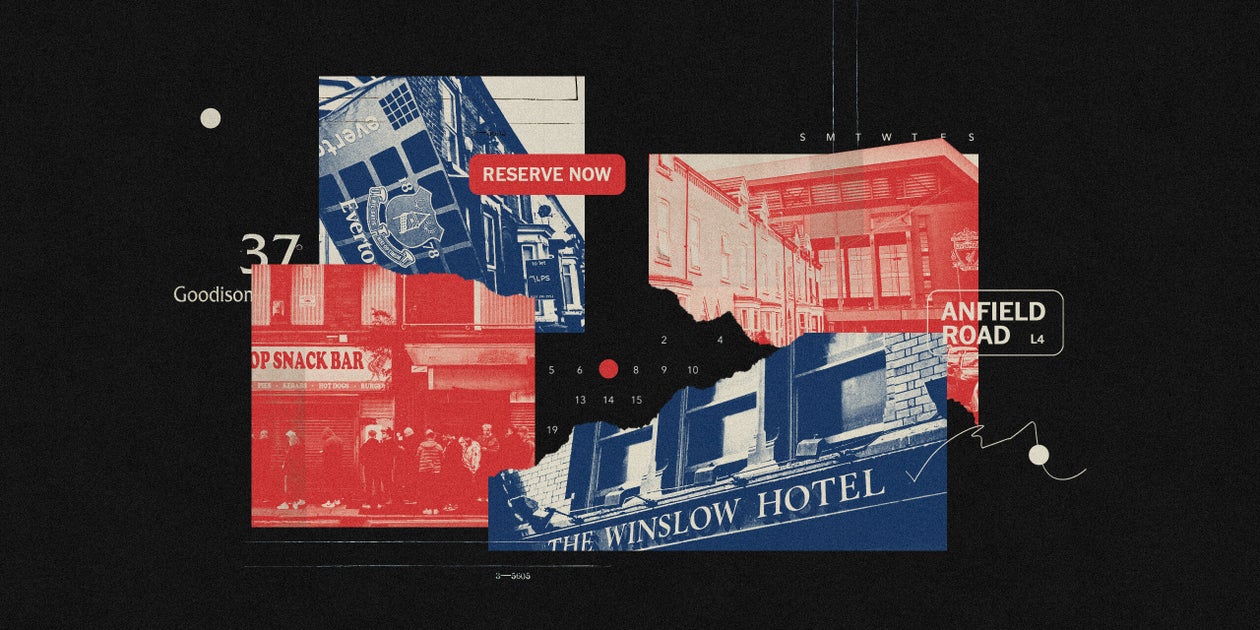Almost as soon as Anfield’s last visitors leave, new ones swoop in.
On Tancred Road, four streets away from the district’s famous football stadium and home of Liverpool FC, changeover day in three rental properties last week was Thursday. Out went the Liverpool fans who had travelled from other parts of the world to watch their team’s 3-2 Champions League victory over Atletico Madrid. Shortly after, they were replaced by ones in town for Saturday’s Premier League Merseyside derby against Everton. Nearby, separate groups shared a four-bedroom house from Tuesday to Sunday, taking in both fixtures.
Yet this is only a snapshot of how Anfield’s local community has become increasingly fluid in the era of Airbnb. It is difficult to tell how many homes are being rented out like this, because Airbnb is notoriously protective of its data and did not respond to The Athletic’s request for information about its footprint.
But searching its website for rental options in the area provides a rough guide. Look for somewhere to stay near Anfield in mid-February, for example (when no games are currently scheduled, and therefore availability should be at its height), and you are presented with 31 options in the tangle of streets north-west of the stadium bordered by Anfield Road, Walton Breck Road and Sleepers Hill. Many dozens more are available near the stadium, many of which directly reference the stadium in their Airbnb listings.
There is no suggestion of any wrongdoing in this. Indeed, for some, this explosion in the short-term rental market is proof of a thriving gig economy. On the face of it, parts of Anfield — a traditional working-class neighbourhood, which just happened to have a world-famous football ground in it — have never looked smarter, with the majority of properties closest to the stadium now being what estate agents would term “neatly appointed.” Certainty has encouraged investment and some residents have reacted to the boom in football-related tourism by leasing out rooms, with the additional money helping pay for home improvements as well as mortgages.
Yet there are also unintended consequences which are not quite as positive because there are now many properties where no one lives permanently, having been bought up by groups or individuals with little or no connection to the area.
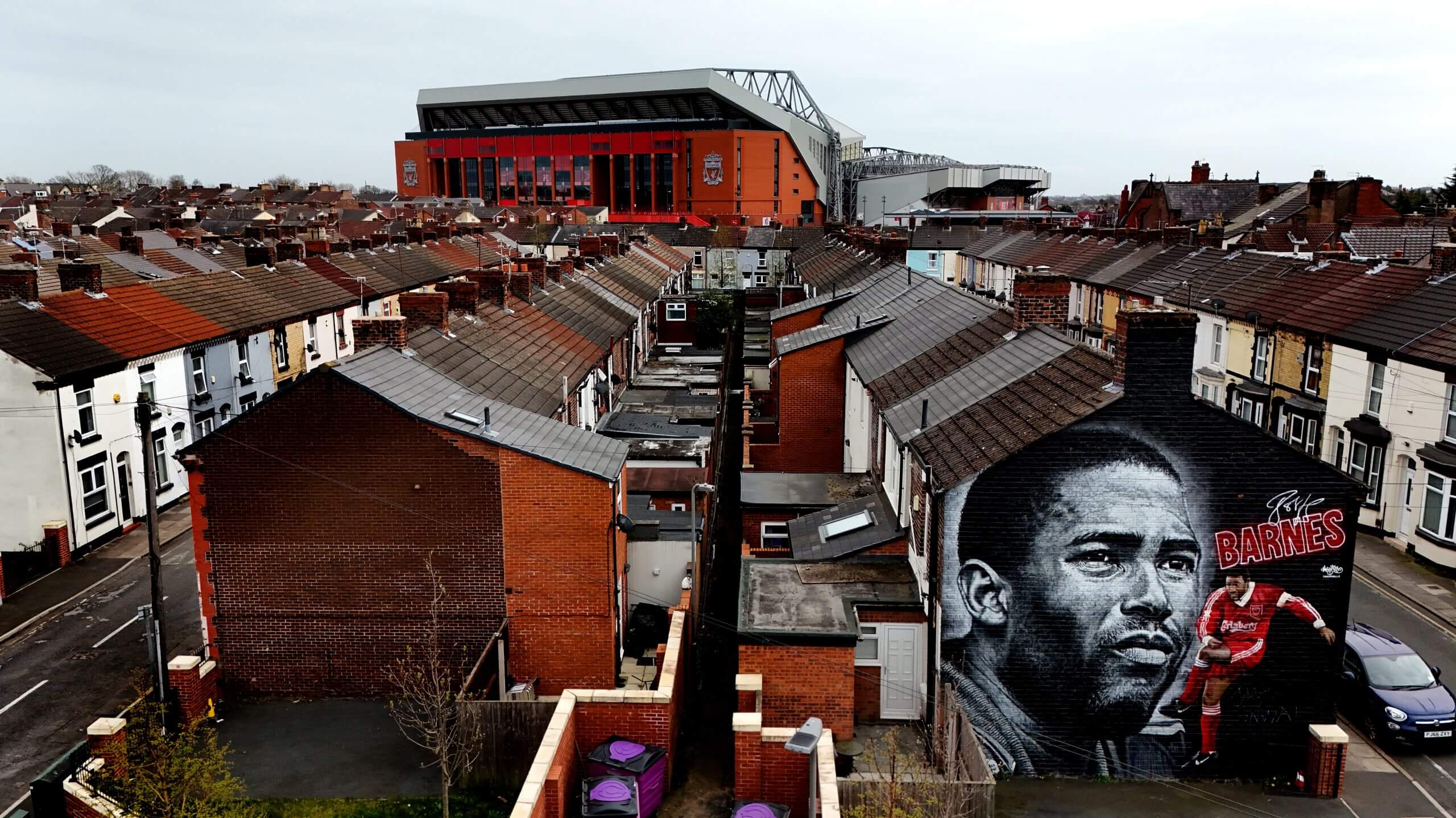
The roads around Anfield now have many houses used for short-term rental apartments (Carl Recine/Getty Images)
A 10-bedroom “townhouse” on Anfield Road costs £938 ($1,126) for a quiet Monday night in February, so you can imagine the sort of sums involved at busier times. Meanwhile, on a street on the opposite side of the ground, eight of the 32 houses are listed on Airbnb, amounting to 25 per cent of the housing stock.
This has meant that some residents do not know who their neighbours are and each week provides an anxious wait to see who shows up. Areas which were once defined by close-knit relationships, even in hard times, now feel transient and transformed. And not everybody has welcomed it.
Not so long ago, a stench of desperation hung over the warren of narrow streets that surrounds Anfield.
First, they suffered as a consequence of the city’s wider economic problems, then those issues were exacerbated by the uncertainty which surrounded Liverpool FC’s future in the area.
The club had toyed with the idea of moving to a new site not far away on Stanley Park but ultimately stayed put, although the process was far from smooth. Both the club and city council were accused by residents of driving down conditions in the local area by buying properties — either directly, through third parties or via compulsory purchase orders — and allowing them to remain vacant.
The endgame was for this to allow Liverpool FC to expand Anfield by building a new Main Stand. One road, Lothair Road, was eventually demolished, while another row of houses on nearby Alroy Road also disappeared. Eight years after the new Main Stand was completed in 2016, the Anfield Road Stand was also redeveloped, lifting the stadium’s capacity from 45,262 to 61,276.
More seats means more cash, particularly via new corporate hospitality areas in the rebuilt stands, and Liverpool’s record revenues help explain why they have won two league titles and a Champions League since 2019. Even on non-match days, fans fly in from across the globe to ‘experience’ Anfield, encouraged by partnerships with travel companies such as Expedia.
All of this has had a profound impact in the area of Anfield. According to the 2021 Census, the ward has a population of 14,730, but four times as many people now visit around 30 times a season for matches, and through the summer after Liverpool FC were given permission to host concerts, swelling the club’s coffers even further.
There are some thorny logistical issues caused by the redevelopment — a road that was closed during the Anfield /Road Stand construction work has yet to reopen, although both the club and city council insist they are still working on a solution — but of potentially more significance is the impact on Anfield’s sense of community.
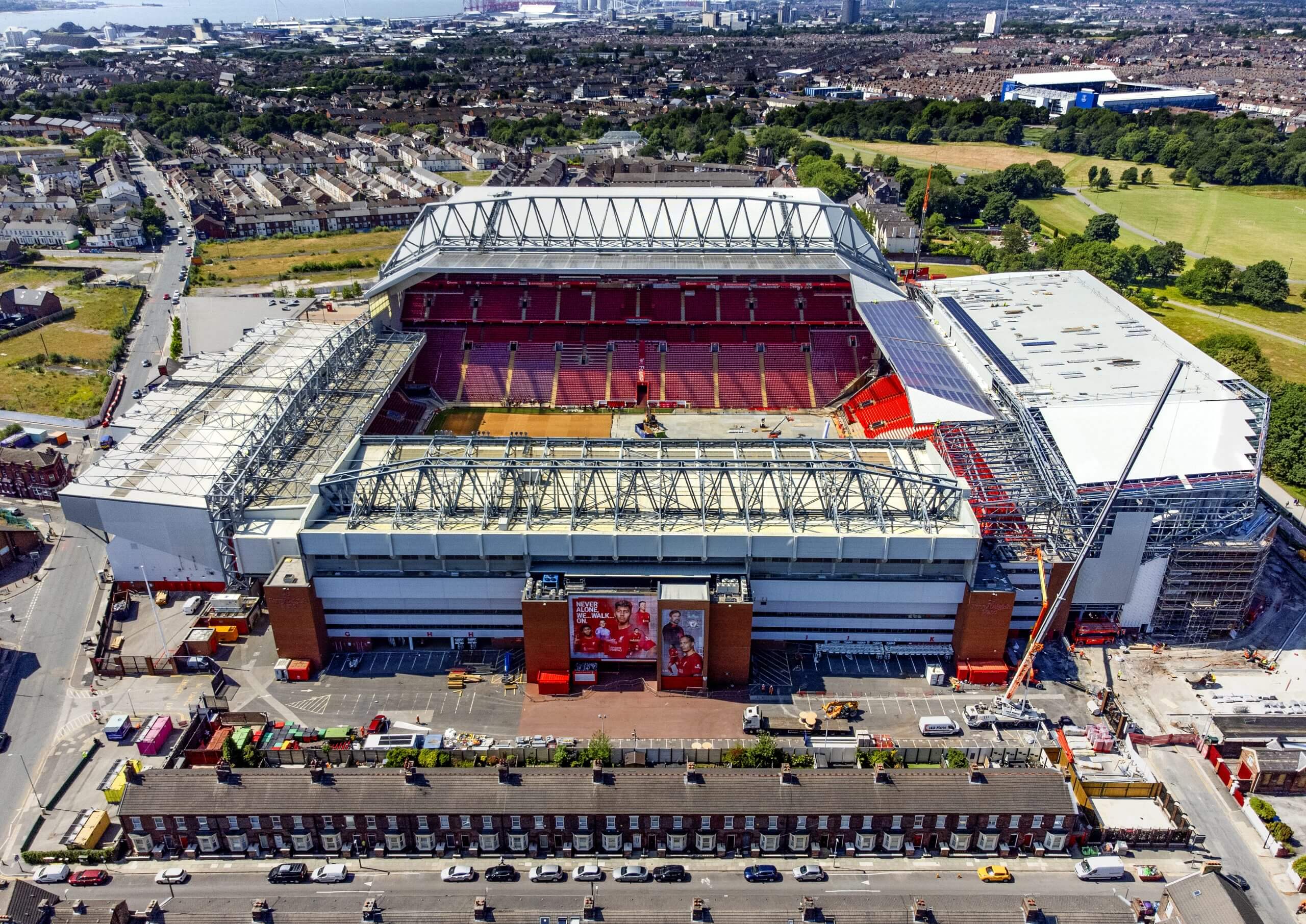
Anfield during work on the Anfield Road Stand, with Goodison Park in the background (Peter Byrne/PA Images via Getty Images)
Ian Byrne, the Labour member of parliament for West Derby and a Liverpool season ticket holder, has lived in Anfield for the best part of four decades.
A couple of years ago, a property over the road from his home was sold. He still hasn’t met the new owner, because they never moved in. Instead, it was listed on Airbnb, along with seven other short-term rentals on the same street.
He thinks investors began to recognise the area’s potential in 2018 when the application to turn Anfield into a music venue was made, which meant it would be open for most of the year, potentially driving more profits for letters. This coincided with Liverpool’s performances on the field improving, yielding greater interest in the club itself.
Byrne says that during the week, the houses listed on Airbnb are usually empty but at weekends they are almost always full, “when they become party pads.” What sometimes follows is an increase in noise and anti-social behaviour. On a few occasions, the police have been called in. It means that “every time a house goes up for sale, you are thinking, ‘Oh no, not again.”
In a recent report on Airbnb’s economic impact, it pointed out that the company’s home-sharing model helps fuel visitor spending in local communities, as well as supporting jobs in multiple industries and creates tax revenue.
Yet for Byrne, the most unsettling element of a relatively new phenomenon is the deeper impact on the cohesion of the community and the character of the area.
“Society feels transient, these are atomised times and a lot of communities feel like they are under attack,” Byrne says. “When you are struggling, it’s reassuring to have neighbours that you know because it makes you feel a bit safer and secure. It’s good to be able to pop next door for a chat. The potential loss of this is incalculable. We need stronger communities, not weaker ones. We need more affordable housing rather than see them sold off to faceless people.”
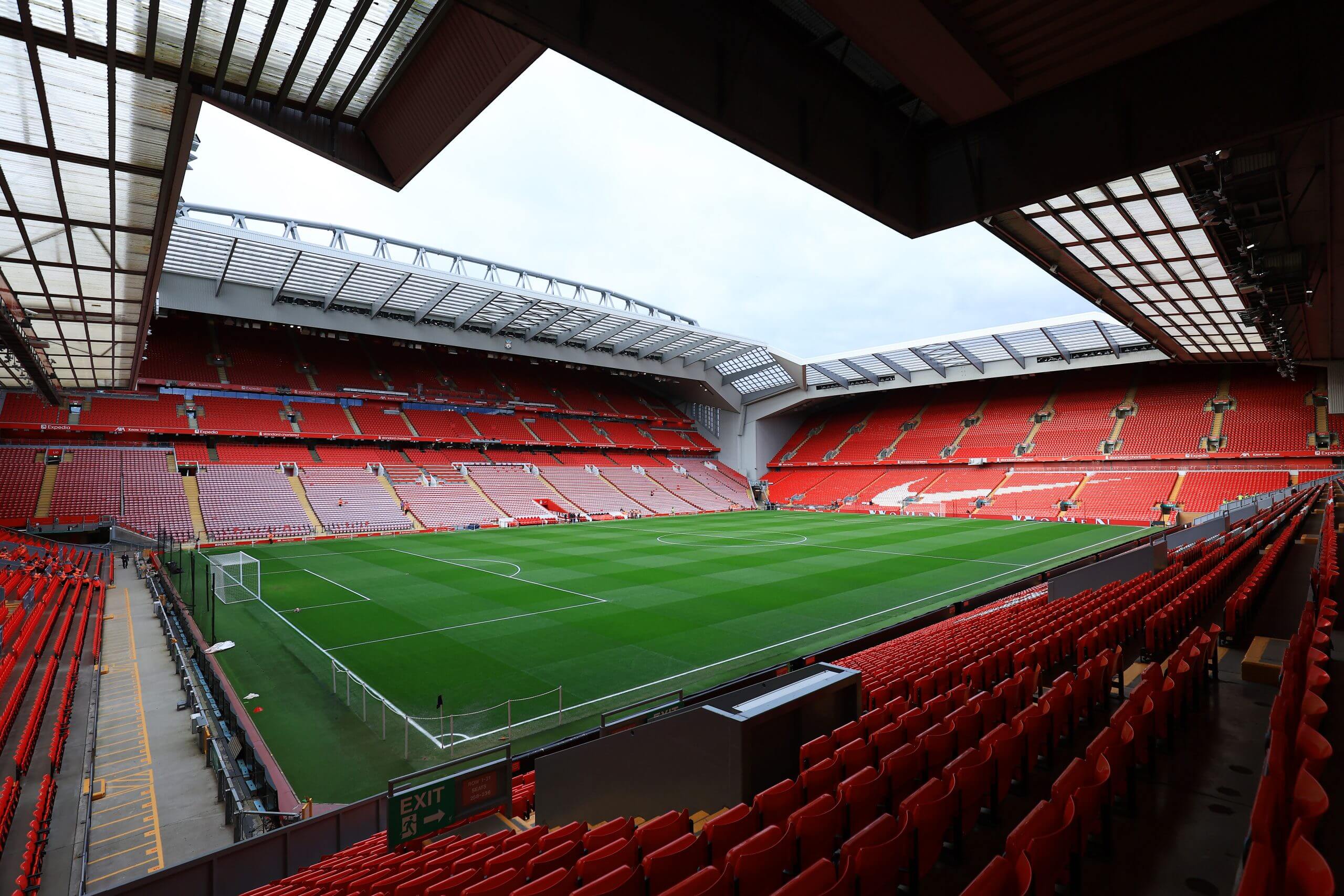
An expanded Anfield delivers huge revenues for Liverpool (Jess Hornby/Getty Images)
Byrne believes the developing situation is symptomatic of what has happened to Anfield since he first arrived, with the district’s economy pivoting towards what happens at the stadium. At first, it was the pubs, chip shops and bookmakers defining opening hours mainly around Liverpool matches. “Now that culture is extending to housing,” Byrne says.
There is a deep sense of helplessness about what can be done to stop the latest iceberg because there are no easy solutions. It would be different if these were hotels, but currently, a lack of regulation means anyone can make their home available with Airbnb. When The Athletic asked Liverpool City Council about the issue, the authority recognised the problem as a “concern”, suggesting any property being used for this purpose is one less that can be used by a household, which then has an impact on the housing market and rents.
The proliferation of Airbnb in Anfield, as well as other areas of the city, also reduces the effect of a tourist levy that was voted in by hotels and started in June. This means that any person staying in a hotel room in Liverpool has to pay an additional £2, with the money used by the Liverpool Accommodation Business Improvement District (ABID) for essentially advertising the city, creating a circular and “sustainable visitor economy,” according to Bill Addy, the company’s CEO.
Byrne thinks the success and growth of Liverpool FC have come at the cost of residents over time. He wonders whether residents might react as those have in Barcelona, where local unhappiness at the proliferation of Airbnb properties played a part in the Spanish government telling the company in May that it must remove 65,000 property listings in the country for breaching regulations.
A mile or so away, the area surrounding Goodison Park is facing different kinds of problems.
Airbnb does not have as great a presence in Walton, the suburb where Everton’s former stadium is located. Neither has it made much of a mark down by the docks, where Everton’s new Hill Dickinson Stadium glitters on the banks of the Mersey.
Ultimately, Everton could only have stayed in Walton, where Goodison was hemmed in on three sides by the same type of terraced housing as Anfield. But for the club to have expanded to the size of their 53,000-capacity new arena — 13,000 bigger than Goodison, with vastly more hospitality suites — they would have needed a similarly aggressive expansion policy in the surrounding streets as Liverpool adopted at Anfield.
Goodison Road, Bullens Road (which borders a primary school) and Gwladys Street would probably have had to have met the same fate as Lothair Road and been wiped from the map. Moving two miles west this summer ultimately made both practical and financial sense.
Walton is another deprived district which faces many of Anfield’s economic and social problems. Its main thoroughfare, County Road, has long seemed busier than Anfield’s equivalent, Walton Breck Road, which runs past the Kop grandstand, mainly because it is used as an alternative route for motorists travelling north from Liverpool’s city centre. But both needed the lifeblood supplied by their resident football clubs, with the steel-shuttering of many businesses only lifting on a matchday.
Everton have not left the area completely. The club’s free school remains on Spellow Lane, and their Everton in the Community charity still operates out of Goodison Park, which is being used by the club’s women’s team for eight of their 11 home games this season. Their two Women’s Super League games so far have drawn crowds of 6,473 and 4,313.
They are more than respectable attendances in the WSL but fall way short of the 39,000 who would regularly squeeze into Goodison for men’s games, a point that Dave Bond, the licensee of the nearby Winslow Hotel pub knows only too well.
The Winslow used to shift 3,000 pints on Everton men’s matchdays, with around 90 per cent of trade coming in the hours before kick-off. Now, Bond admits to The Athletic that he might have to close in the next couple of months if footfall remains as low as it is.
Bond knew this challenge was coming and tried to get ahead of the problem by organising a 90-seater coach to transport Evertonians to their new home a couple of miles away for each game. He has also provided live music at the Winslow to draw supporters back after matches, but he is currently operating at a loss.
For each of Everton’s home games this season, the bus has only been a third full and he is already thinking of downsizing. “It’s all backs to the wall at the moment,” Bond concedes. “I’ll carry on with the buses for as long as I can. I didn’t think it would be this bad.”
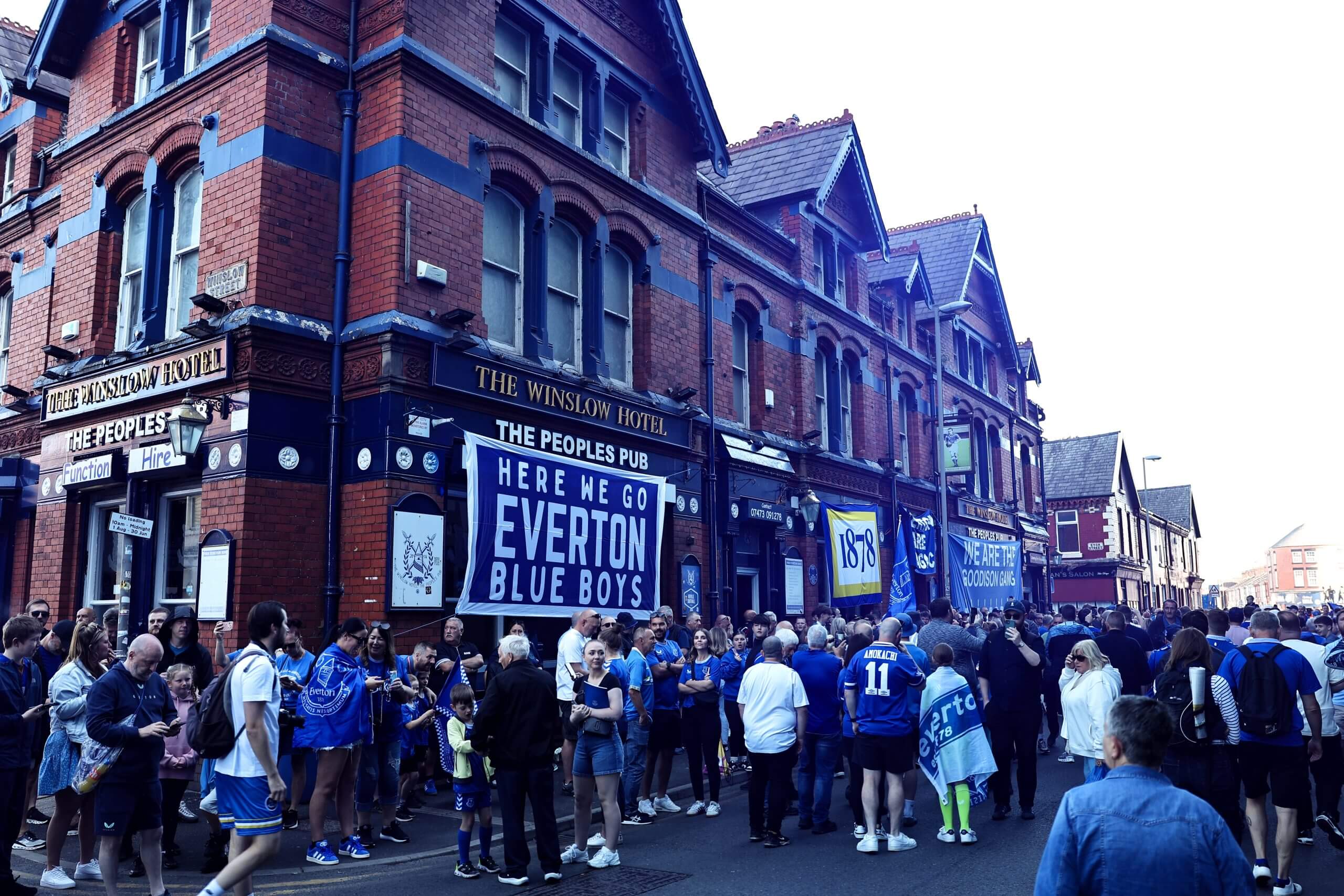
The Winslow Hotel before Everton’s last men’s home game at Goodison Park in May (Robbie Jay Barratt – AMA/Getty Images)
Unlike other popular Everton haunts such as The Brick and the Black Horse, the Winslow is not on County Road and this brings additional pressures because it is more out of sight than ever, tucked away in the shadow of the old stadium’s main stand on Goodison Road.
If it goes and does not return, Everton will lose a piece of history because the pub’s connection to the club is not just through geography. Everton’s greatest goalscorer, Dixie Dean, used to drink there at a time when Jack Borthwick, a former Everton defender, was the licensee. While Norman Greenhalgh, a title winner with Everton in 1939, became landlord in the 1950s, the father of Everton player Neil Robinson, who grew up on Spellow Lane, worked as the head barman.
Later, Joe Royle toasted his appointment as Everton manager in 1994 with 2-0 victory over Liverpool in his first game, as well as a pint in a venue that soon became the home of Everton’s official supporters club. During a tough period in the early 2000s, Kevin Campbell, the team’s centre-forward, called in to discuss the team’s form with punters.
Even when Goodison Park was fully operational, there were significant challenges running the Winslow, evidenced by the fact that its previous owner closed the doors for 18 months in 2012 due to financial difficulties. Bond, an Evertonian from Ireland, is desperate to avoid the same outcome, but that will only happen if punters return after they adjust to new routines.
Everton want to help stimulate the regeneration of Vauxhall — the largely dilapidated dockland area of the city where their new stadium is based — but with only a few drinking options by the ground, pubs in Liverpool’s business district have benefited the most from their relocation. An area that was once subdued at weekends has been brought alive by the presence of a club that is now only a short-ish walk away.
Impressions of Liverpool as a city have increasingly been formed by the performance of its thriving centre, with less regard for what is happening in districts such as Anfield or Walton. On Saturday, the former Everton right-back Tony Hibbert had a post-match pint in the Winslow and the pub was busy, but it was only what Bond expected.
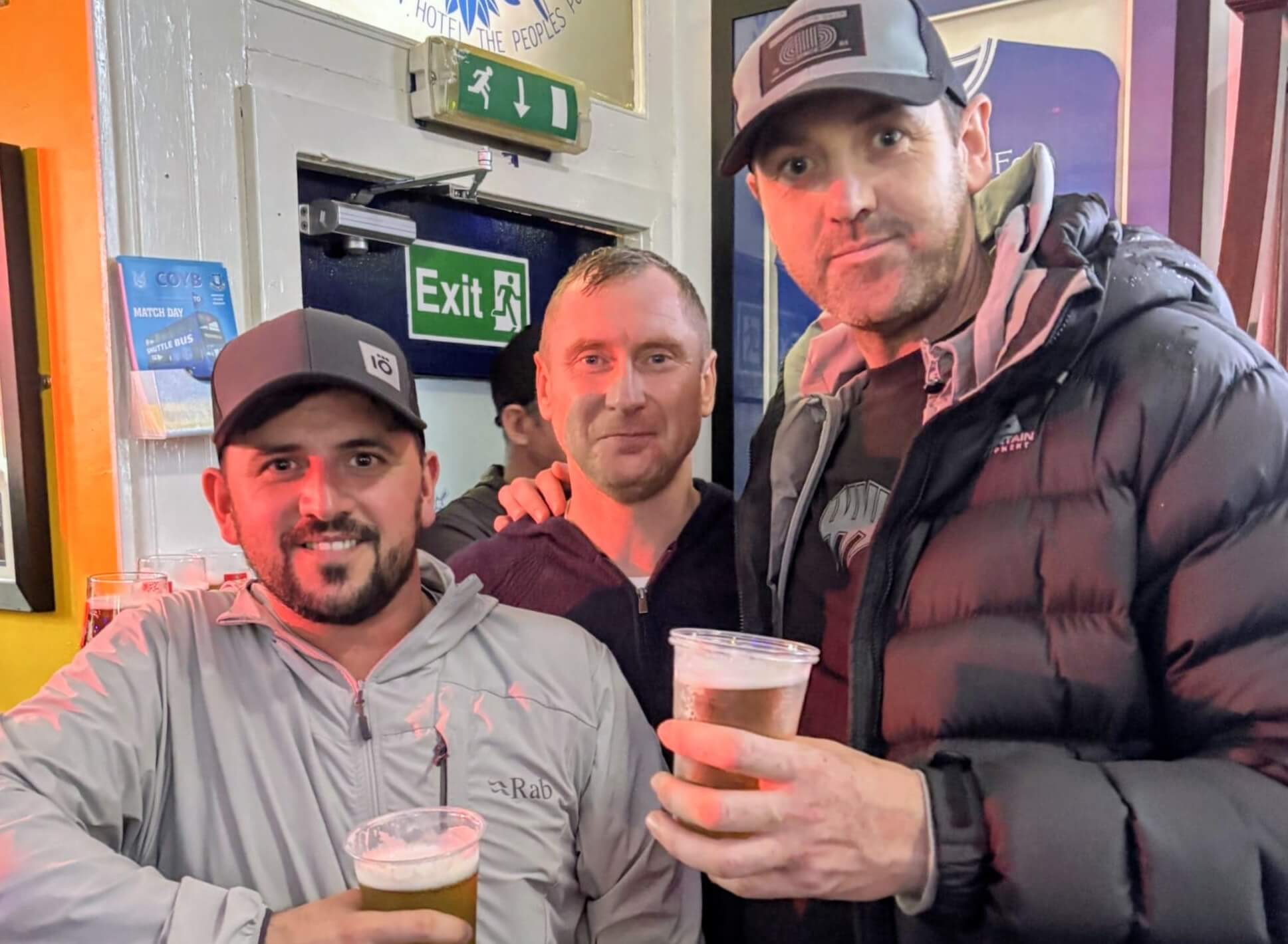
Tony Hibbert (centre) visits the Winslow pub on Saturday (Photo courtesy of Dave Bond)
In the good old days, the most lucrative game of the season was the Merseyside derby at Goodison Park. For this Everton pub, the busiest Saturday of the season is likely to be for the game played at Anfield.
The changes in Anfield and Walton are not simply felt, but experienced in real terms.
Recent United Kingdom governments have allocated the provision of services to the population. Anfield and Walton are already some of the most deprived districts in the country, and it is reasonable to wonder what the future holds for those who remain and are just trying to get by.
Ultimately, the tide feels hard to reverse. Liverpool are a commercial behemoth that just keeps on growing, even if Anfield is probably at its limit in terms of capacity. Everton are some way behind but will hope to close the gap courtesy of their new dockside home. Their combined pulling power has unquestionably helped build Liverpool’s brand as a city, and helped deliver the kind of commercial growth that inspires jobs, prosperity and in theory regeneration.
But there is a tension there, too. While clubs must look after themselves in an increasingly cutthroat economic world, it also feels they owe a debt to the communities of which they form such an integral part. They have identities in their own right and ones that most would consider worth protecting. Liverpool FC, which tried and failed to trademark the name ‘Liverpool’ in 2019, certainly know the value of being associated with its home city.
Perhaps there is ultimately no perfect conclusion when an institution such as Liverpool, or, indeed, Everton, reaches the point where it needs to expand beyond its boundaries to compete with market forces.
(Top photos: Getty Images; design: Dan Goldfarb)
